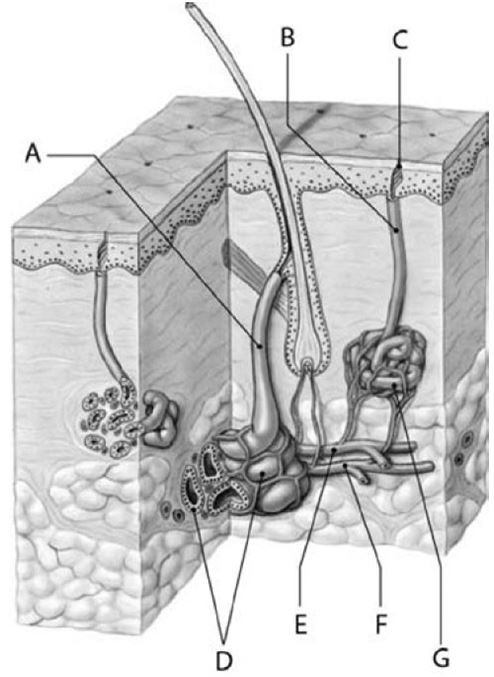Identify the two pleural membranes and describe them under normal and disease conditions
What will be an ideal response?
The pleural membranes, the visceral pleura and the parietal pleura, produce a slippery serous secretion that allows the lungs to glide easily over the thorax wall during breathing. This serous fluid causes the two pleural layers to cling together. They can slide easily from side to side across one another, but they cannot easily be pulled apart. As surface tension of water holds them tightly to each other, the lungs are held tightly to the thorax wall. The pleural space is more of a potential space than an actual space, and it is only during illness or injury that this space becomes apparent, such as with a pneumothorax that can lead to atelectasis.
You might also like to view...
Structure G

A) releases milk.
B) releases oil.
C) releases sweat.
D) is a sensory receptor.
E) releases mucus.
The process of bones increasing in width is known as ________.
A) closing of the epiphyseal plate B) long bones reaching adult length and width C) appositional growth D) concentric growth
In order for T4 to be produced, the diet must contain sufficient amounts of:
a. calcium b. iodine c. iron d. sulfur
How is excess tissue fluid returned to the blood stream?
A. It is picked up by lymphatic vessels and then returned to the blood stream. B. The high concentration of tissue fluid solutes causes diffusion of materials to the blood. C. Low blood pressure pulls it back into the capillaries. D. The excess fluid is not returned to the blood stream.